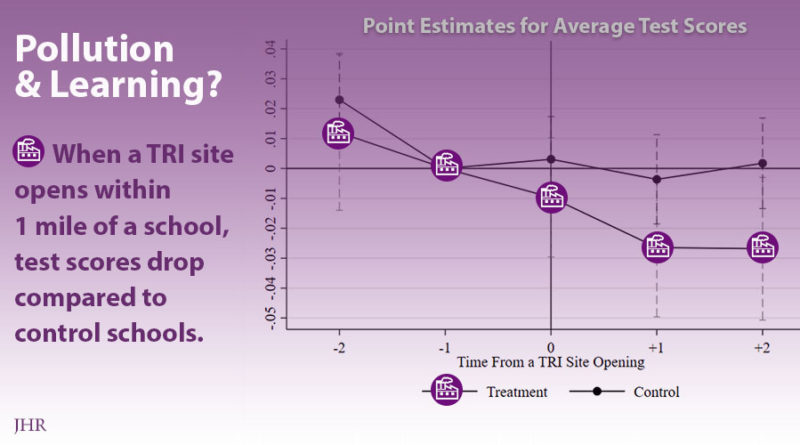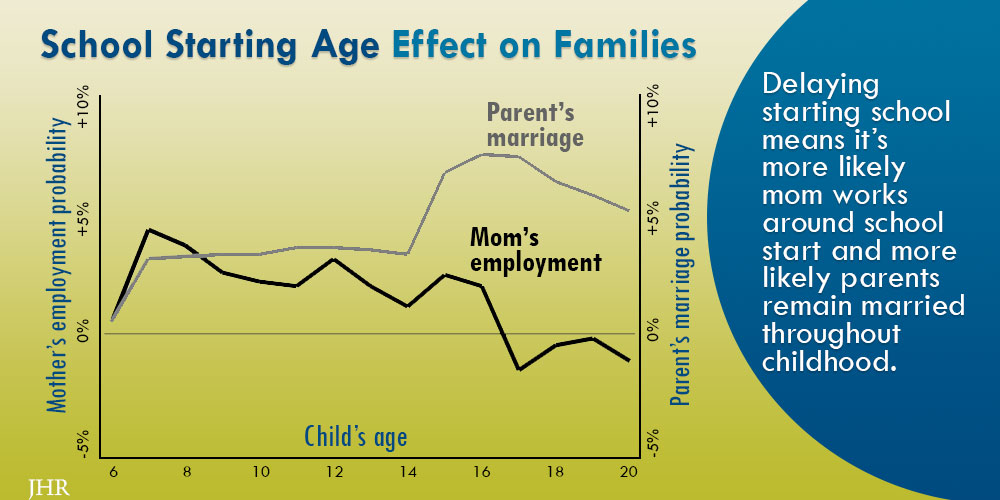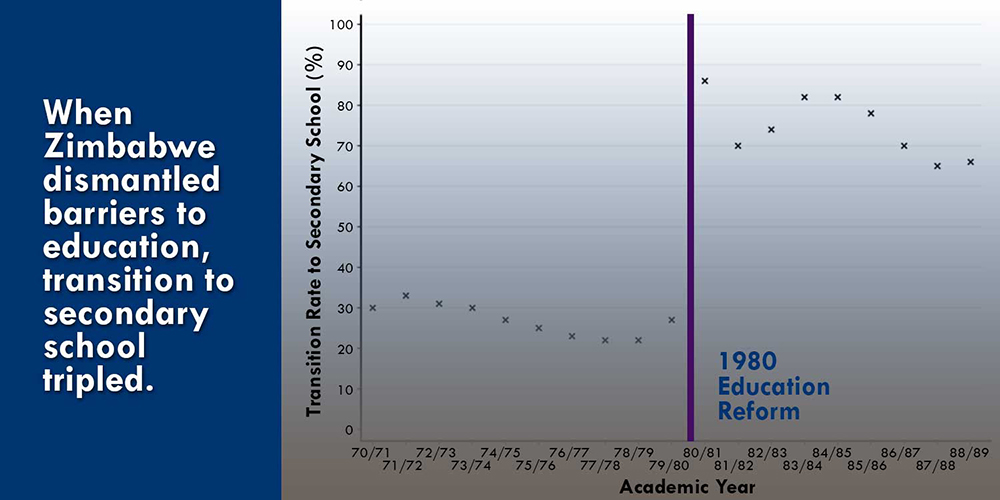Recess, Lead, and Mercury—TRIs Impact Kids and School Rankings
There are currently 21,800 toxic release inventory sites (TRIs) operating in the United States, but we have little information on how the pollution from these sites affects kids. Toxic release inventory sites include factories, plants, and federal facilities that emit pollution into the air, and 22% of U.S. kids attend school within 1 mile of a TRI. There’s reason to believe that TRI pollution might be especially harmful because TRIs emit pollutants known to be harmful to children, like lead and mercury. Claudia Persico and Joanna Venator studied the school experience of kids exposed to TRIs, with a focus on both student achievement and high-stakes accountability school rankings.
The Obama administration attempted to regulate TRI pollution for the first time in 2011, with the EPA’s Mercury and Air Toxics Standards (MATS) rule. But the SCOTUS ruled against the MATS rule in 2015 for lack of sufficient evidence, and while it didn’t overturn the MATS rule entirely, it could be rolled back.
Research has shown that prenatal exposure to pollution is bad for children’s academic outcomes, but we don’t know how typical exposure to pollution affects kids who are attending school nearby. Brain development is at different stages, so this is an interesting and important question. Persico and Venator are the first to examine the effect of TRI pollution on the academic, health, and behavioral outcomes of children, and to look at a few years of exposure in middle childhood.
They find that contemporaneous exposure to TRI pollutants in schools has significant, negative impacts on test scores. Pollution also affects the likelihood a student will be suspended or absent from school.
Also, looking at the overall school context, this is the first study to examine how pollution impacts schools’ success at meeting accountability benchmarks under a high-stakes school accountability system (NCLB). NCLB schools are rewarded and punished for their test score performance during this time period. The team found that a TRI site opening within one mile of a school is associated with lower performance on school accountability measures, equivalent to a 2.7 percentage point increase in the likelihood a school’s ranking drops one or more levels.
Why is it important to consider both the students’ outcomes and the ranking? According to the authors, “If schools are not fully in control of students’ test scores but still face rewards and sanctions for these scores, this raises important questions of fairness, particularly if the schools serving the most Black or low-income children are the most affected by local pollution. Also, TRI pollution has costs we’re just starting to recognize, with implications of inequality, since test scores can translate into wage losses later in life.”
Read the study in the Journal of Human Resources, “The Effects of Local Industrial Pollution on Students and Schools,” by Claudia L. Persico and Joanna Venator.
***
Claudia Persico is an assistant professor for the Department of Public Administration and Policy in the School of Public Affairs at American University. Joanna Venator (@JoannaVenator) is a graduate student of economics at the University of Wisconsin–Madison.



